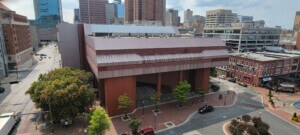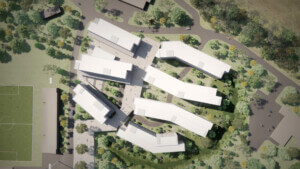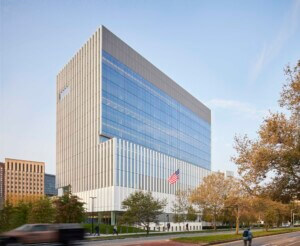Four years after SOM first broke ground on Hopper Hall, the first dedicated cyber studies building for the U.S. Armed Forces, the latest addition to the United States Naval Academy (USNA) campus in Annapolis, Maryland, is now open.
Because the USNA campus contains an eclectic mix of architectural styles, from Beaux-Arts to modernism, SOM chose to keep Hopper Hall contextual in its massing and design. As such, the rectangular academic building rises only just slightly higher than the neighboring Nimitz Library, and the gridded precast facade is similar as well. The pattern continues inside, as intersecting white columns and beams create repeating “boxes.”
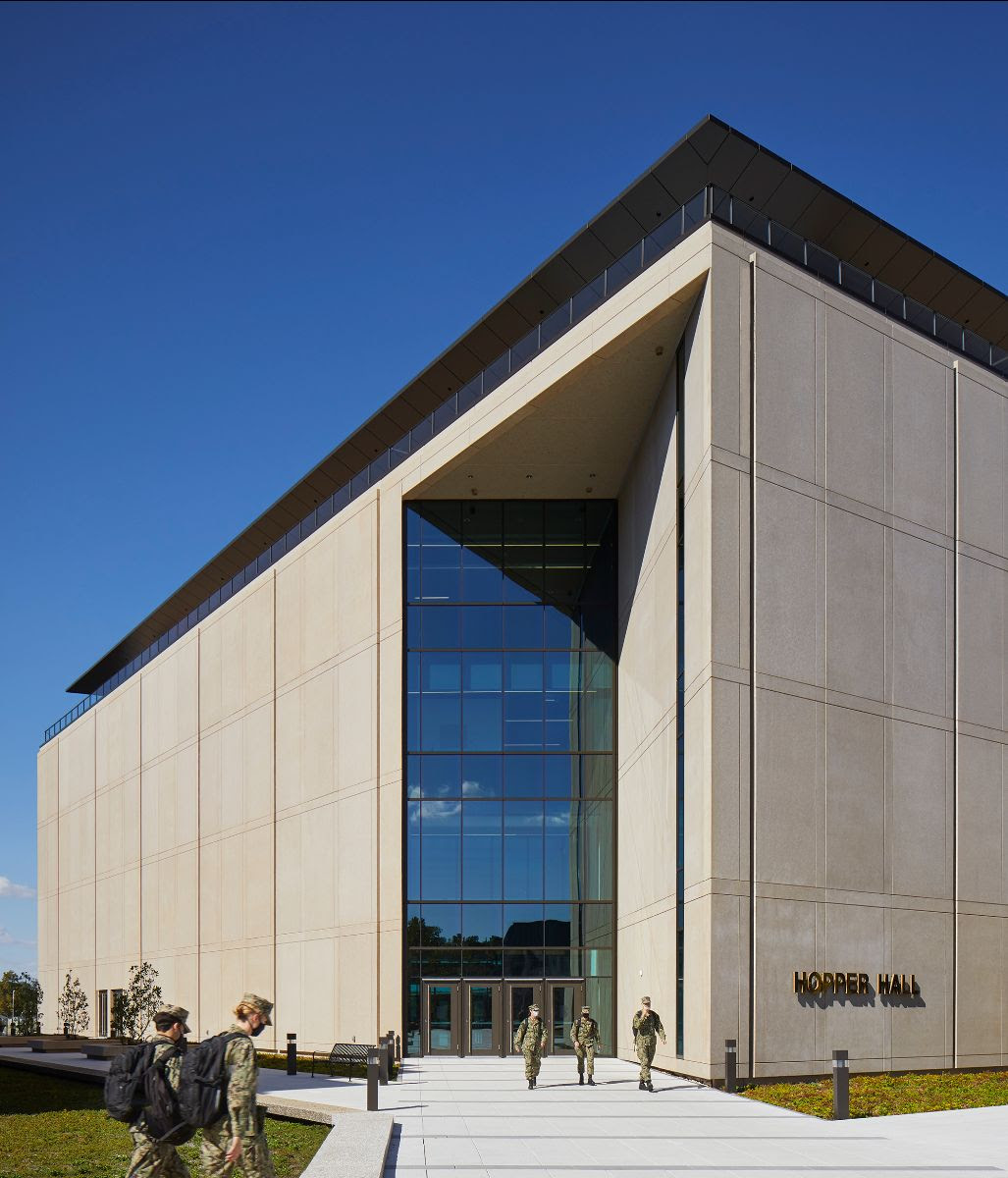
Hopper Hall sits on the campus’s perimeter along the Severn River, and as such, security concerns dictated both the programmatic and facade arrangement. At the base, the area most susceptible to both flooding and potential blasts, the facade is at its most solid, gradually peeling away as the building rises to reveal multistory windows. The hall’s aquatic labs (the Surface and Underwater Robotics Facility and the Shared Waterfront Activities Lab) are also located at the ground floor, while the building’s more sensitive areas (offices, data centers and labs, classrooms, and research facilities) are on higher floors.
“Rigor and sensitivity to the surrounding context are the defining characteristics of the architecture,” said SOM design partner Colin Koop in a press release. “But Hopper Hall is also very much a building of its time, in how it interacts with the outdoor space of the terrace and in its programming.”
The building houses four academic departments according to SOM: Cyber Science, Computer Science, Electrical and Computer Engineering, and Weapons Robotics Controls. There is also dedicated space for events and guest lectures.
On the ground floor, SOM and builders Turner Construction Company have carved out a two-story, 6,000-square-foot pass-through called the “Bridge,” a lobby that can be repurposed as an events hall when needed. Although somewhat (likely intentionally, given its purpose) staid, the Bridge is bounded on either end by full-height windows, giving unobstructed views of the river from all the way across the entrance.
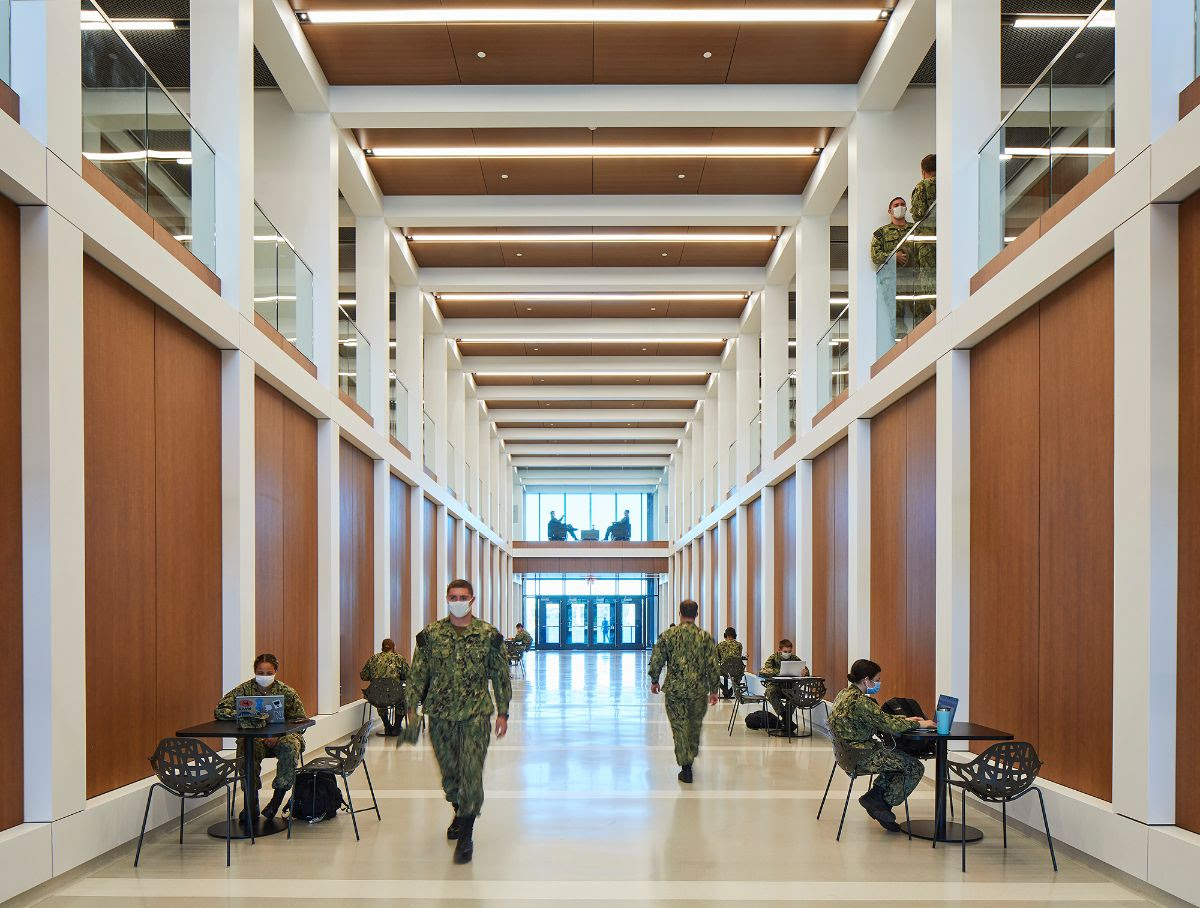
According to SOM, Hopper Hall is the “first major U.S. service academy” building to be named after a woman (the late Rear Admiral Grace Hopper, a computer programming pioneer), but it’s certainly not the only cyber center; AECOM is currently working on the Center for Cyber Innovation for the United States Air Force Academy in Colorado Springs.








